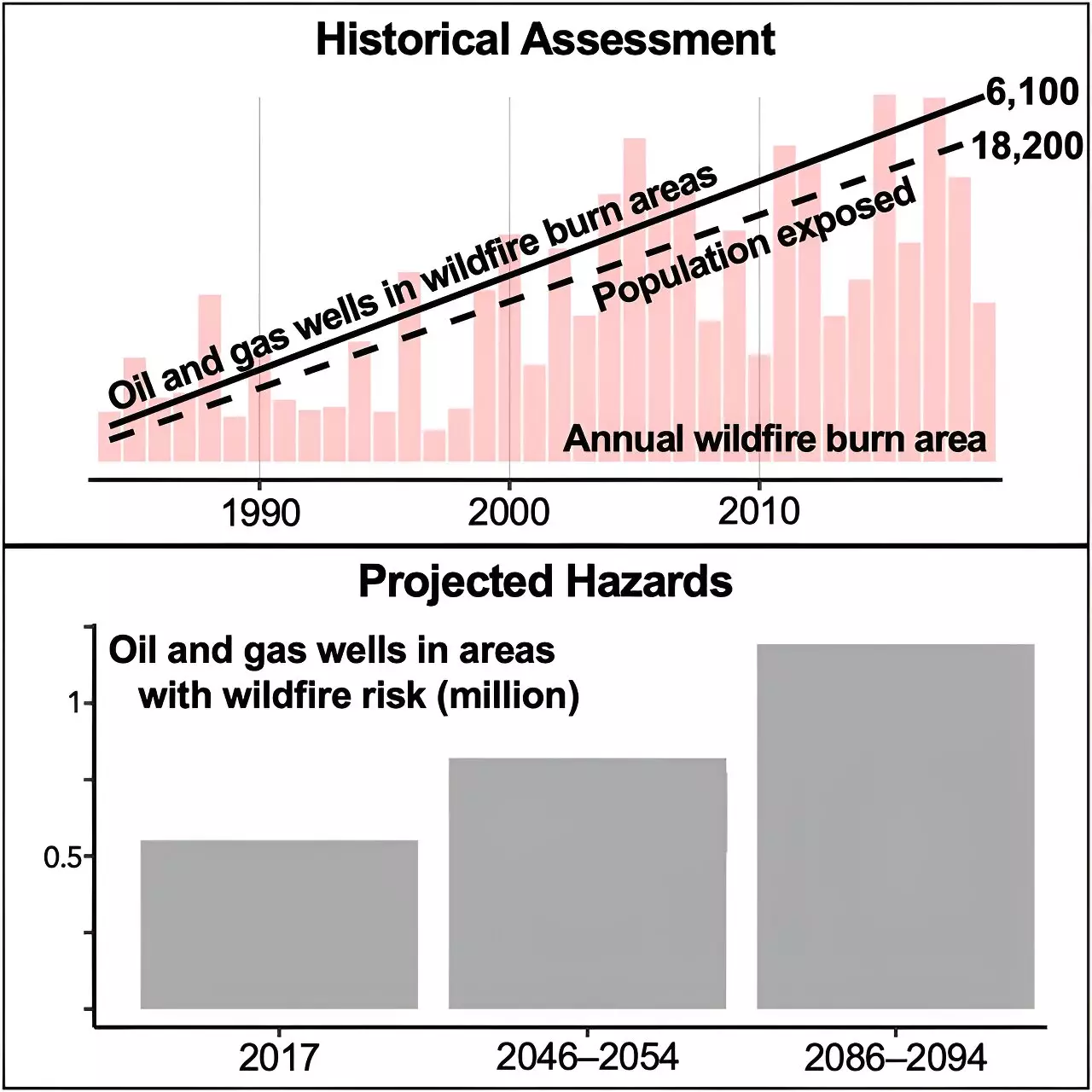The recent study conducted by researchers from the University of California, Berkeley, sheds light on a significant issue in the western U.S. – the presence of over 100,000 oil and gas wells in areas that have been ravaged by wildfires in the past. What is even more concerning is the fact that approximately 3 million people live in close proximity to these wells, putting them at risk of being impacted by future fires that are exacerbated by climate change.
The analysis presented in the study, published in the journal One Earth, highlights the potential compound hazards posed by wildfires on oil and gas facilities. While the immediate public health effects of scorched and damaged drill sites are not entirely clear, it is crucial to acknowledge the interconnected risks and implications that arise from this intersection. The historical trends and projected scenarios point towards a pressing need to address these issues proactively.
David J.X. González, an assistant professor at UC Berkeley’s School of Public Health, underscores the environmental justice implications of the current situation. With a focus on areas like Los Angeles and Kern counties, where oil and gas extraction and high fire risk converge, González brings attention to the disproportionate exposure faced by communities of color to wells affected by wildfires. This underscores the urgent need to address systemic disparities in environmental protection and public health.
The study indicates that the number of oil and gas wells in high-risk wildfire areas is projected to nearly double by the end of the century. This trend signals a concerning trajectory where more wells are being drilled in areas expected to face increased fire threats. While the impact of this development may not be immediate, the cumulative effects over time pose significant challenges for communities living near these facilities.
González’s research, which delves into the public health impacts of oil and gas development, underscores the need for comprehensive studies on the health effects of fires that burn oil and gas facilities. With toxic chemicals already present in oil fields, the potential for hazardous compounds to be released during wildfires raises serious concerns. This calls for enhanced protections and regulations to safeguard the health of residents near industrial activities and to prevent further environmental degradation.
As we confront the complex intersection of wildfires and oil and gas wells in the Western United States, it is imperative to prioritize the health and safety of communities living in vulnerable areas. By addressing the environmental justice implications, assessing the long-term risks, and implementing proactive policy measures, we can strive towards a more sustainable and resilient future. The findings of this study serve as a wake-up call to reevaluate our approach to energy extraction and environmental protection in the face of escalating climate challenges.


Leave a Reply